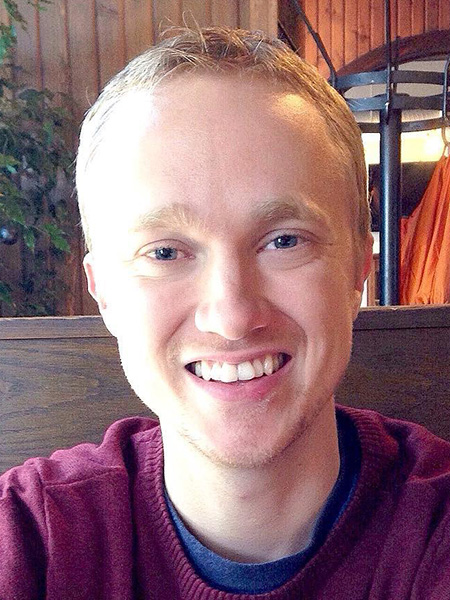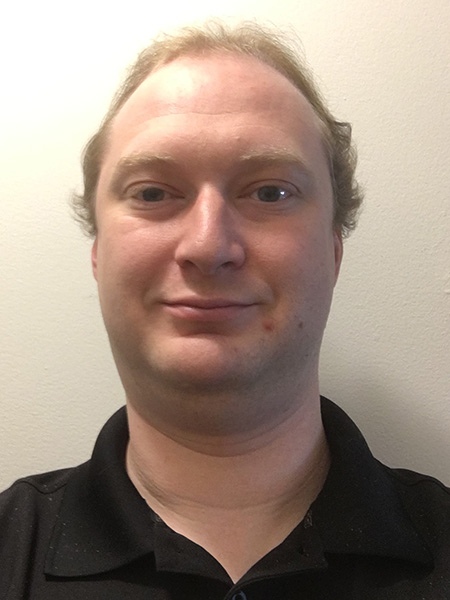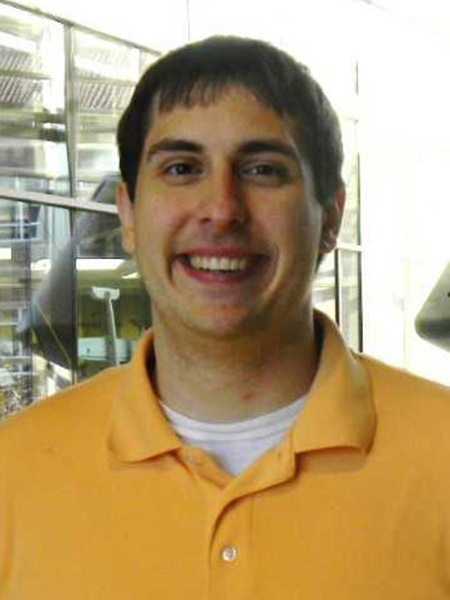Four AAE students selected for the NASA Space Technology Research Fellowship
Four AAE students were selected for the NASA Space Technology Research Fellowship (NSTRF).

Graduate students Nick LaFarge, Jeremy Marcum, Michael Orth, and Jeffrey Pekosh earned the prestigious honor of being named Fellows.
NSTRF awards are made initially for one year and may be renewed, with satisfactory progress, for up to three additional years. Fellows receive a student stipend ($36,000), faculty advisor allowance ($11,000), visiting technologist experience allowance ($10,000), health insurance allowance ($2,500), and tuition and fees allowance ($20,500).
The goal of NSTRF is to sponsor U.S. citizens and permanent resident graduate students who show significant potential to contribute to NASA’s goal of creating innovative new space technologies for the nation’s science, exploration and economic future, the program’s website says. NASA Space Technology Fellows will perform innovative, space technology research at their respective campuses and at NASA Centers and/or at nonprofit U.S. Research and Development (R&D) laboratories.

In addition to each student’s faculty advisor, each Fellow will be matched with a technically relevant and community-engaged NASA researcher who will serve as the research collaborator on the award. Through this collaboration, graduate students will be able to take advantage of broader and/or deeper space technology research opportunities directly related to their academic and career objectives, acquire a more detailed understanding of the potential end applications of their space technology efforts, and directly disseminate their research results within the NASA community.
LaFarge’s research is focused on applying modern advancements in machine learning — in particular, reinforcement learning — toward automated spacecraft trajectory design in a multi-body regime. While current missions benefit from years of prior preparation, long-term crewed deep space missions, such as the Deep Space Gateway, demand methods to quickly — and at times autonomously — adapt as unexpected obstacles are met.

Reinforcement learning offers a way of organizing the search through a higher-dimensional solution space, and a means of interacting directly with complex environments. The aim of the research is to develop a framework that can autonomously learn novel methods for trajectory design in a multi-body environment with no a priori knowledge of system dynamics.
LaFarge is a master’s student under Kathleen Howell, Hsu Lo Distinguished Professor of Aeronautics and Astronautics.
“I am extremely grateful for this opportunity to continue my research toward a Ph.D.,” he says. “I am honored to be chosen among such outstanding engineers, and I look forward to pursuing this work in conjunction with NASA. I owe a huge thanks to Professor Howell, my amazing labmates, my family, and my fiancée for their unwavering support and guidance throughout my time so far at Purdue.”

Marcum’s research is focused on better understanding storable propellant combustion behavior to improve the performance and reliability of hypergolic rocket engines.
"I have dreamed that someday I might be able to make a contribution to space exploration. This fellowship gives me an amazing opportunity to achieve that dream, and I am very thankful,” says Marcum, a Ph.D. student whose advisor is Timothee Pourpoint.
Orth is a Ph.D. student under Pourpoint. Orth’s current research focuses on optical flame diagnostics, hypergolic propellant combustion chemistry, and propulsion system design.
His research proposal for the NSTRF fellowship focuses on engine design and propellant chemistry for a novel deep-throttling rocket engine. Rocket engines capable of deep throttling, defined as being able to operate at less than 25 percent of their maximum thrust (a dynamic range of 4:1 or better), are extremely valuable for maneuvers that require both substantial delta-V and high precision during different portions of a maneuver. Applications include propulsive entry descent and landing, especially precision soft landing and ground hazard avoidance.
“I am very excited to receive this fellowship because the topic I proposed was my own idea and having the fellowship funding will allow me to develop it further,” says Orth, whose master’s degree also is from AAE. “I am also looking forward to the opportunity to spend summers working at NASA facilities as part of the fellowship program.”
A Ph.D. student under James Longuski, Pekosh’s research focus is on missed-thrust for low-thrust spacecraft — when spacecraft experience a safe mode event and are forced to deviate from their nominal mission profile. The goal of his research is to streamline the process of analyzing and designing trajectories with missed thrust events in mind.
The project he proposed for NSTRF was to work on a trajectory design tool to that effect.
“I am very excited,” Pekosh says. “It will be a great opportunity to work with some of my existing contacts at NASA and JPL who have done some work on related problems and learn a lot more about tool development.”
